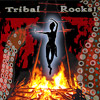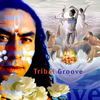It seems that, over the past 20 or 30 years, we’ve evolved from one music style taking over each new decade – 60’s and 70’s rock, 80’s pop – to gradually seeing (or hearing, as the case may be) much more diversity in mainstream music.
Techno, pop, rock and R’n’B fused together to create mainstream music in the 90’s. During the first decade of the new millennium however, tribal music has joined the blend. Rhythms and melodies that we’ve historically left to the ‘new age’ crowd are now making more noticeable inroads into popular music by mixing with beats that we are more familiar with – and doing so rather successfully!
Now that tribal dance music has become readily available to a greater audience, why shouldn’t it be more popular?
 As part of its very nature, tribal drum music has a primal beat. Ceremonially used as an expression of emotion, African tribal drum music symbolizes a heartbeat that brings up a certain mood in the dancers. Emotion goes beyond race, culture and religion, and communicates to us now, just as it did to tribal people dancing on the African savannah hundreds of years ago.
As part of its very nature, tribal drum music has a primal beat. Ceremonially used as an expression of emotion, African tribal drum music symbolizes a heartbeat that brings up a certain mood in the dancers. Emotion goes beyond race, culture and religion, and communicates to us now, just as it did to tribal people dancing on the African savannah hundreds of years ago.
A Slave Trade Side Effect
Tribal dance music has played an important part in the evolution of many European and Western music genres. When you listen to European music styles, it does not really come as a surprise that the slave trade brought together hundreds of different styles of tribal dance music that began influence various music genres. Tribal drum music became an important part of the evolution of modern music styles, from rock’n’roll and jazz to techno and dance.
The Twist & the Jitterbug
Dances such as The Jitterbug and The Twist were created by the fusion of popular rock music and tribal beats. These catchy rhythms and dance moves wriggled their way from our ears directly down to our feet without stopping to ask for permission – the only way you can stand still when they take hold of your spinal column is by nailing your feet to the floor. Even more stolid folks decided that was too painful, so they threw away the hammer and boogied their way into miniskirts and blue-suede shoes.
Tribal Dance Music in the Contemporary World
 Now, fifty years later, tribal dance music is no longer merely a background sound. Recording artists such as Ariel Kalma, Adesa and Professer Trance have helped to keep tribal music alive and well in modern culture. These musicians, among many others, have gathered tribal dance music with rhythms reminiscent of rock, pop and R’n’B from far-flung places such as Australia, Egypt, India, Pakistan, Africa, North America and Central Europe. To create the scintillating tune overflowing with liveliness and movement, they blend didgeridoos, African singing and Tibetan chants blend with guitar riffs and smooth saxophone notes.
Now, fifty years later, tribal dance music is no longer merely a background sound. Recording artists such as Ariel Kalma, Adesa and Professer Trance have helped to keep tribal music alive and well in modern culture. These musicians, among many others, have gathered tribal dance music with rhythms reminiscent of rock, pop and R’n’B from far-flung places such as Australia, Egypt, India, Pakistan, Africa, North America and Central Europe. To create the scintillating tune overflowing with liveliness and movement, they blend didgeridoos, African singing and Tibetan chants blend with guitar riffs and smooth saxophone notes.
As music continues to change grow, our hope is that people and nations will change in the same way.
A roadmap for the future?
The first 10 years of this new millennium have been widespread with both success and tragedy. As people all around the world celebrate and grieve together, as we become more accepting of diverse beliefs and ways of life, hopefully we will follow in the direction that music leads – a harmonisation of mankind’s numerous voices into one melodic sound. The tribal music that once played such an essential part of our history is now guiding us into a peaceful future.